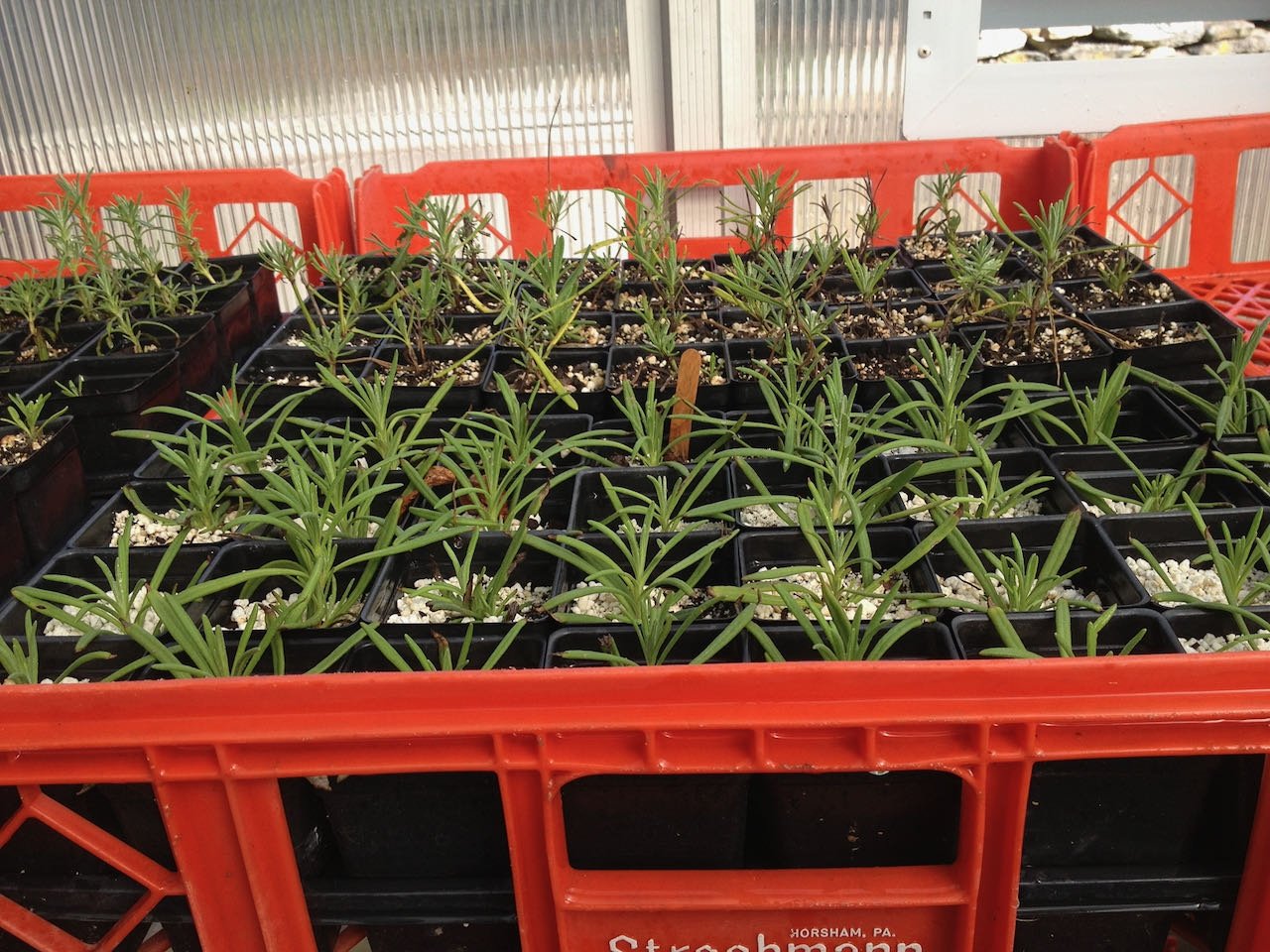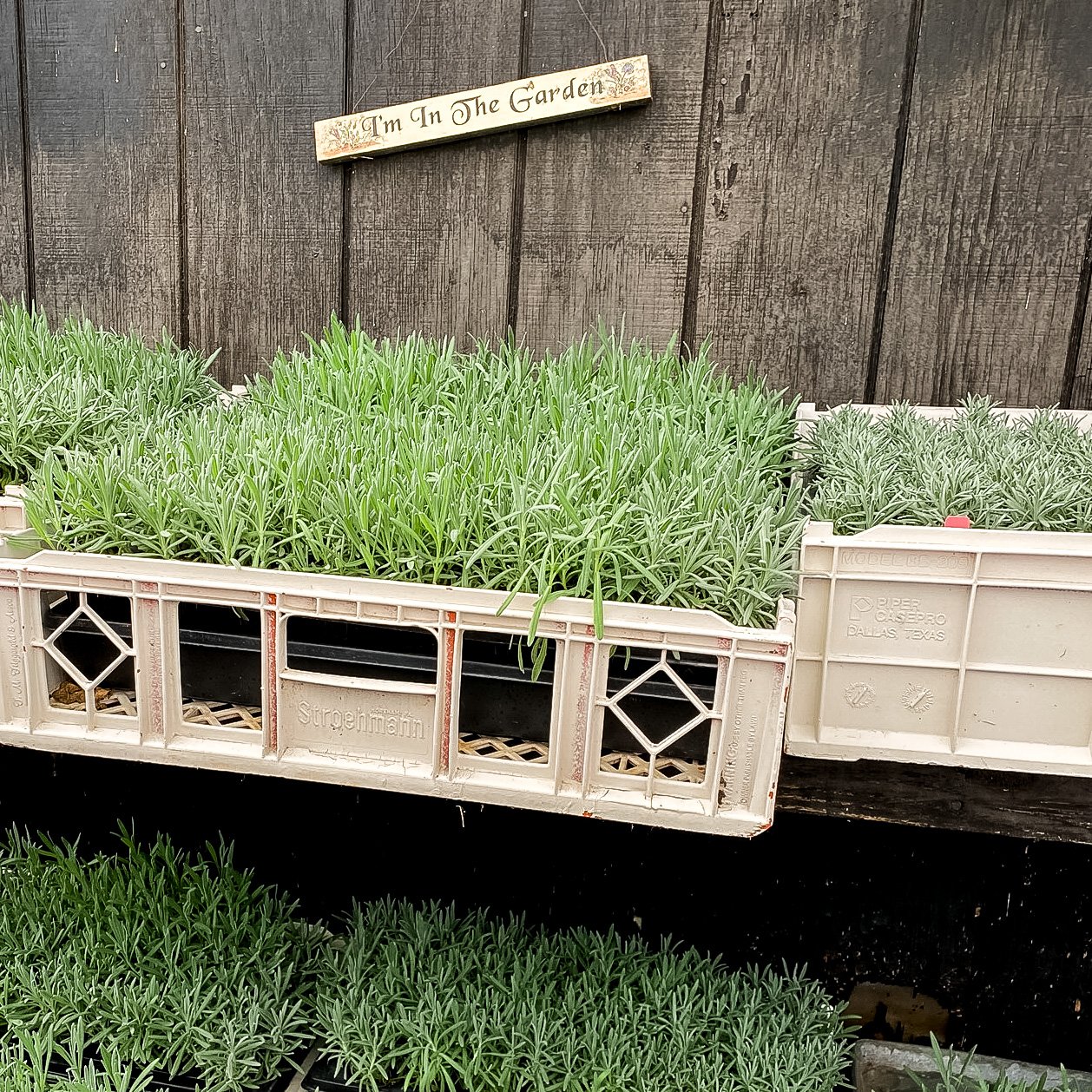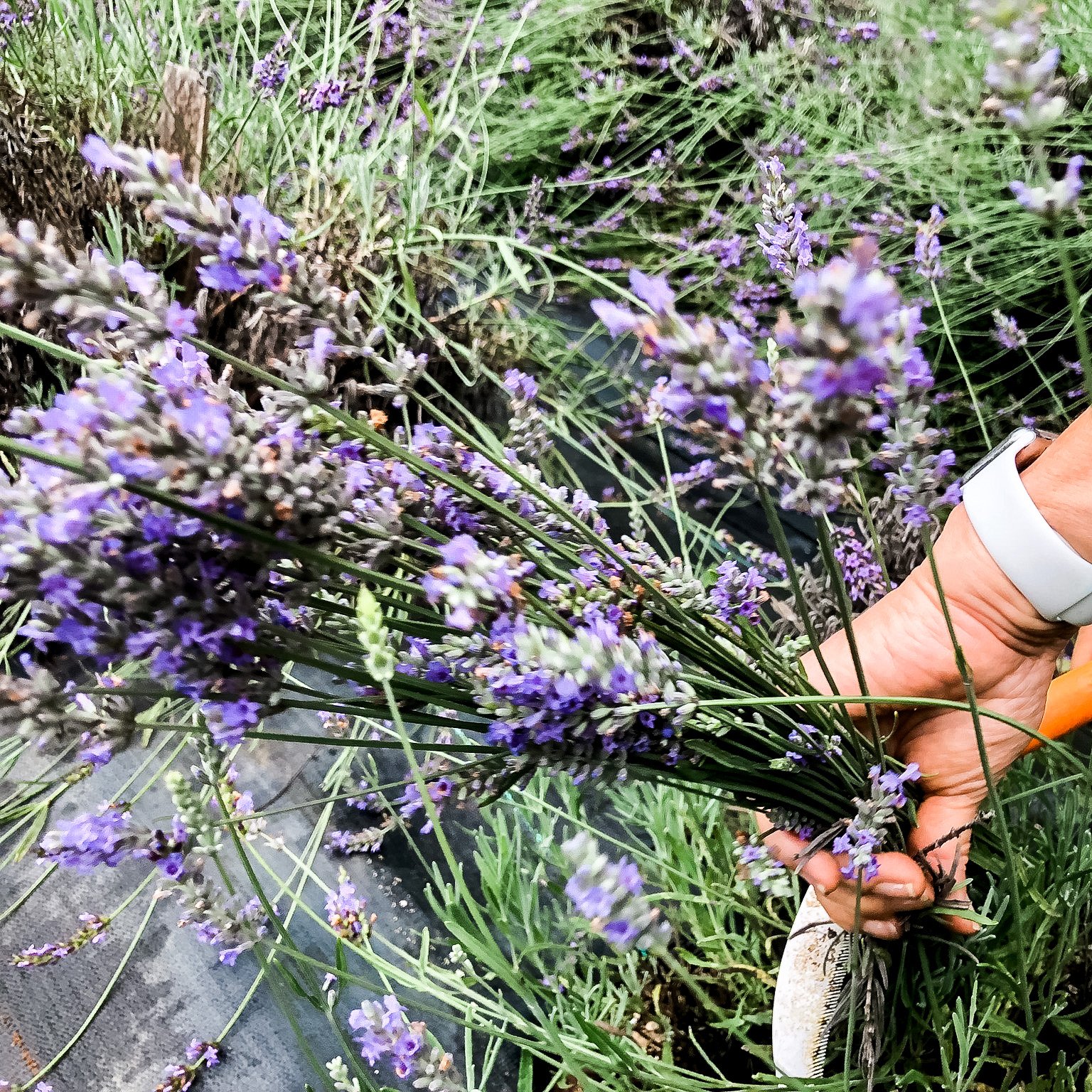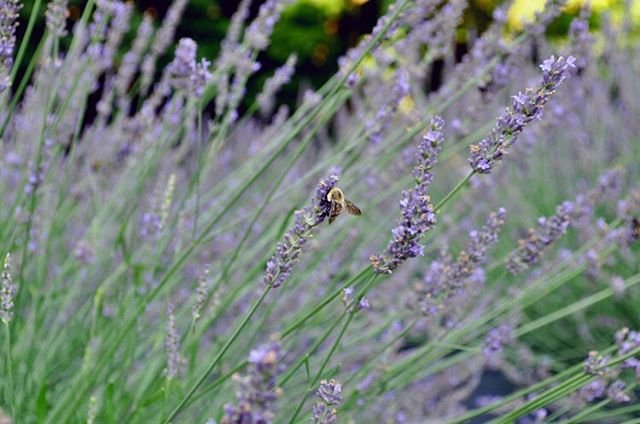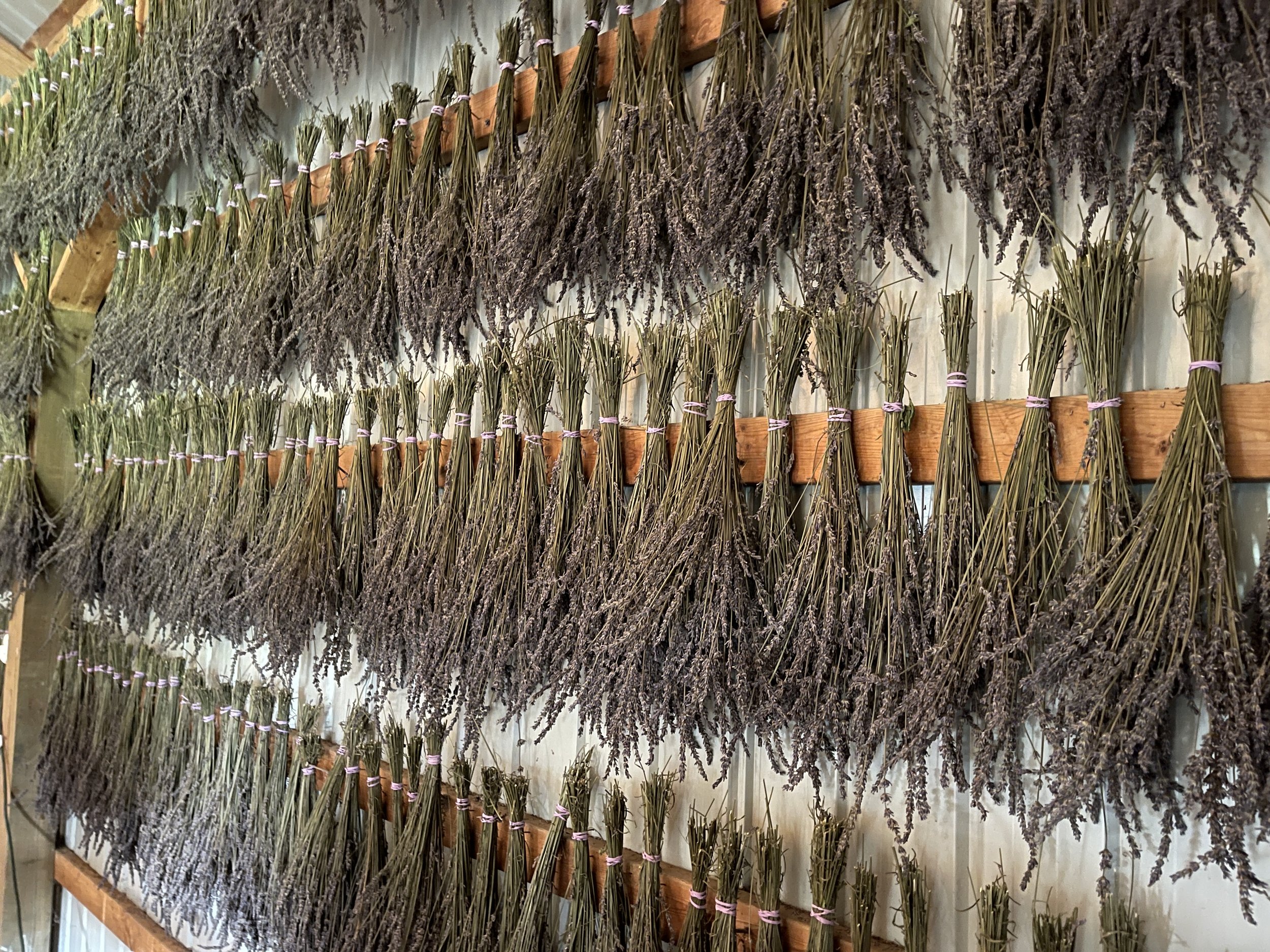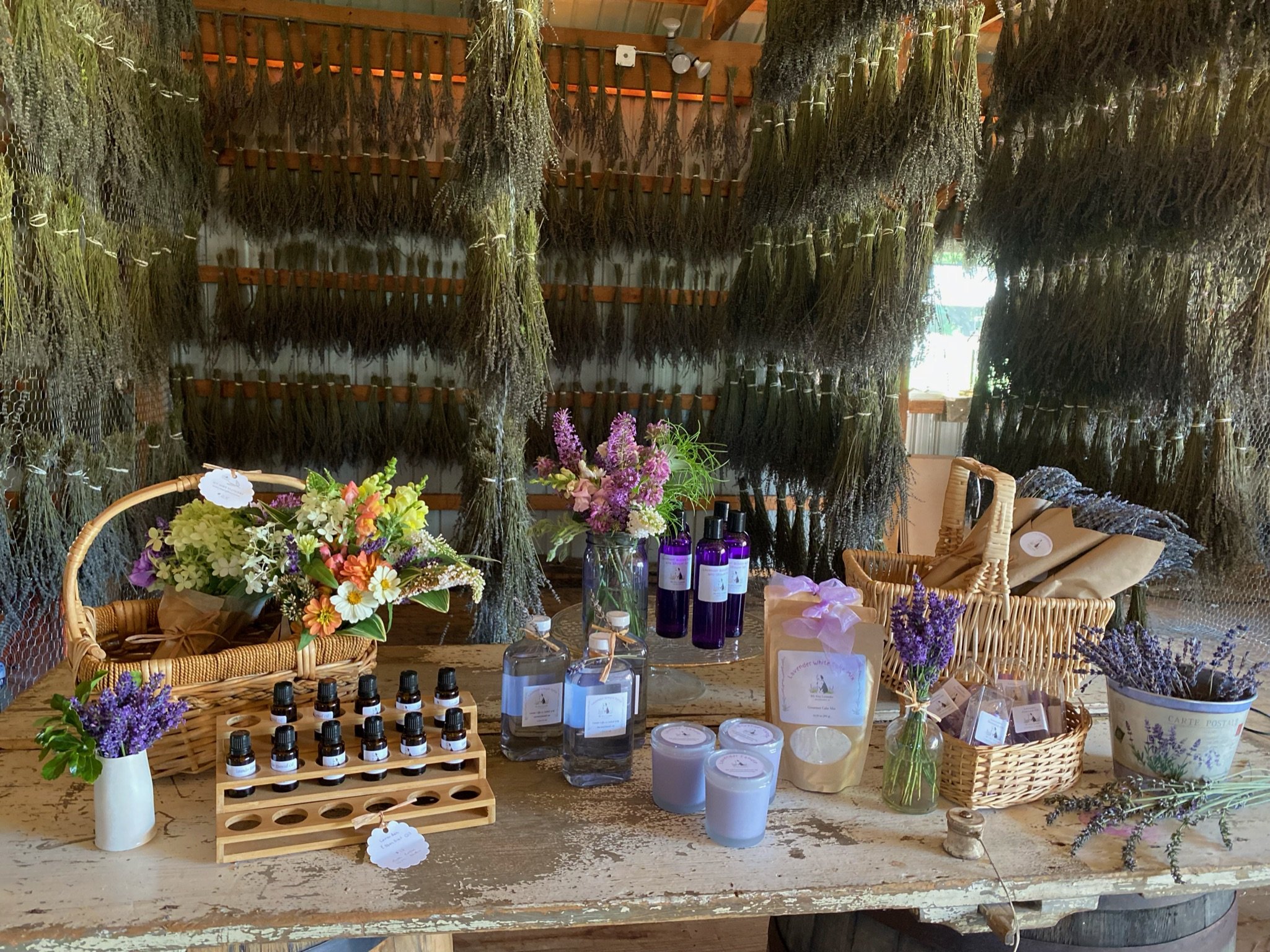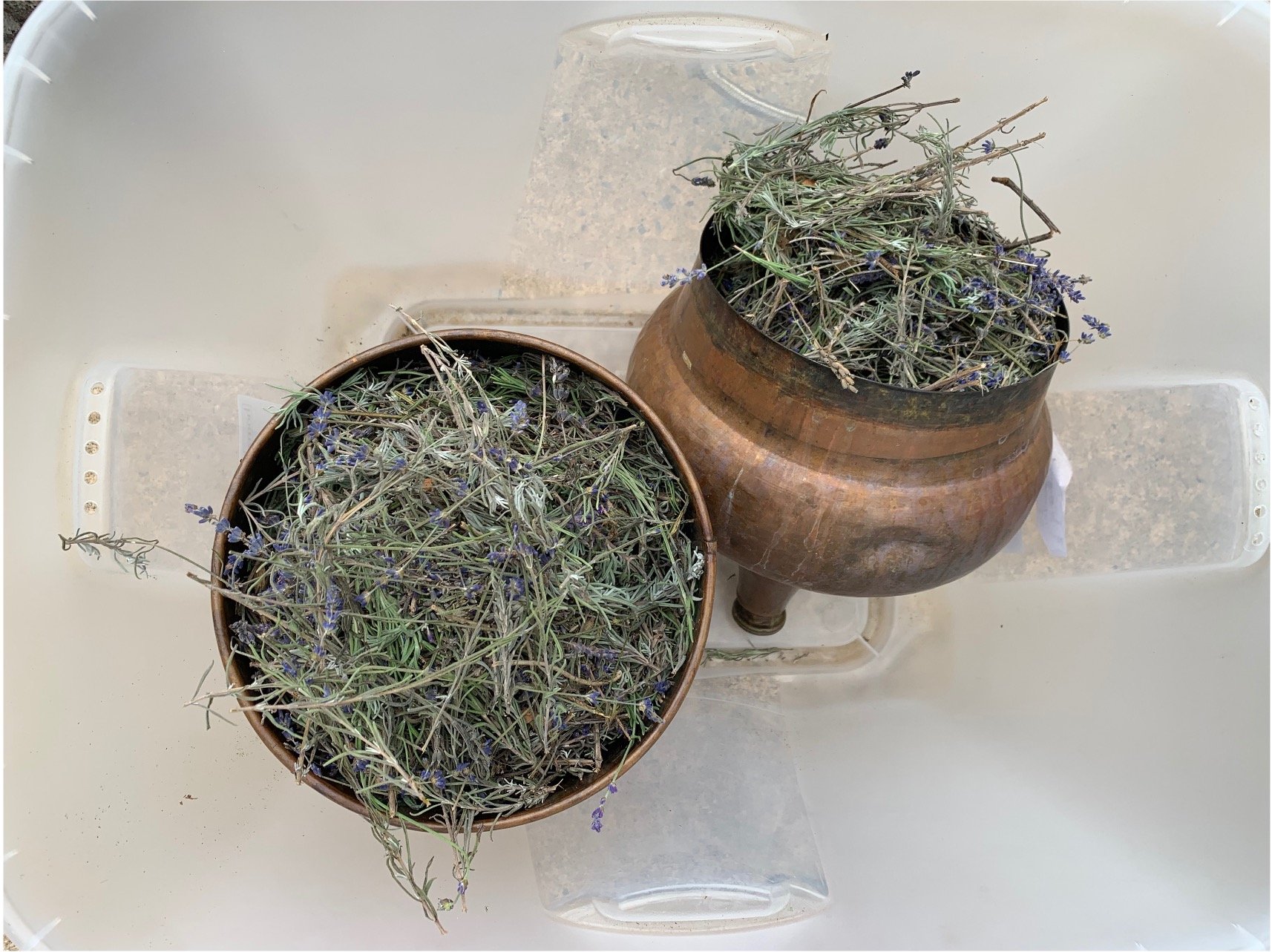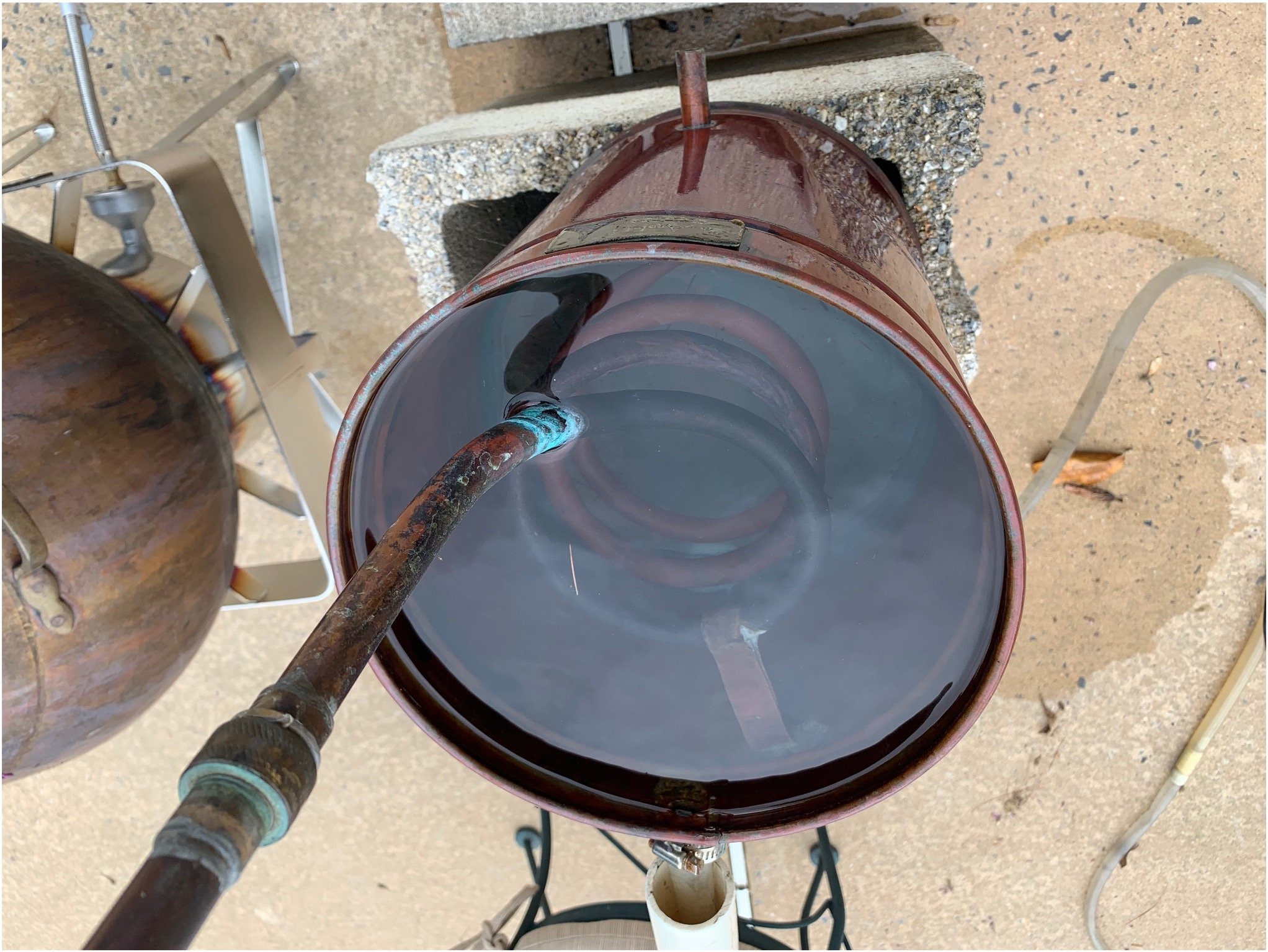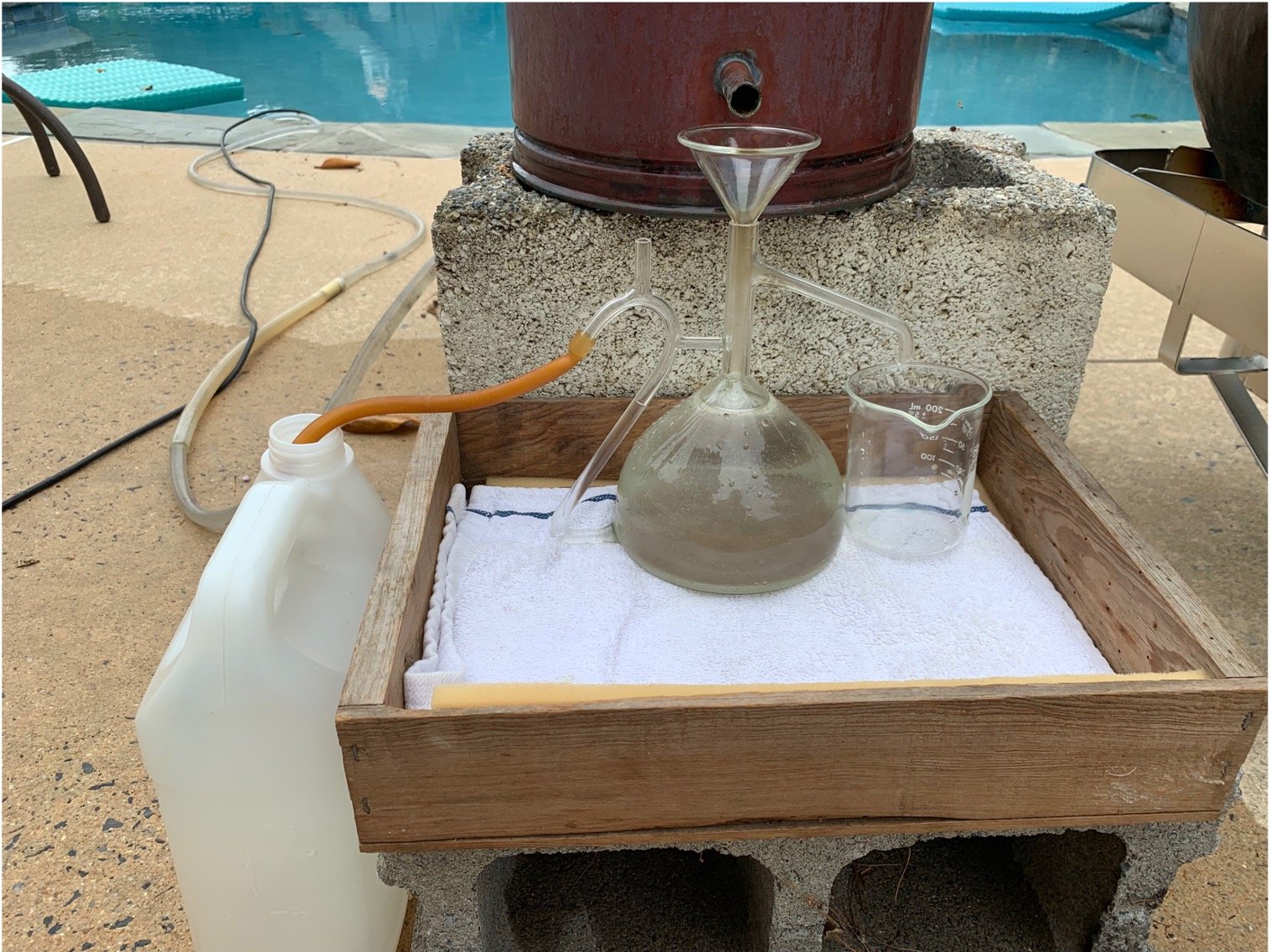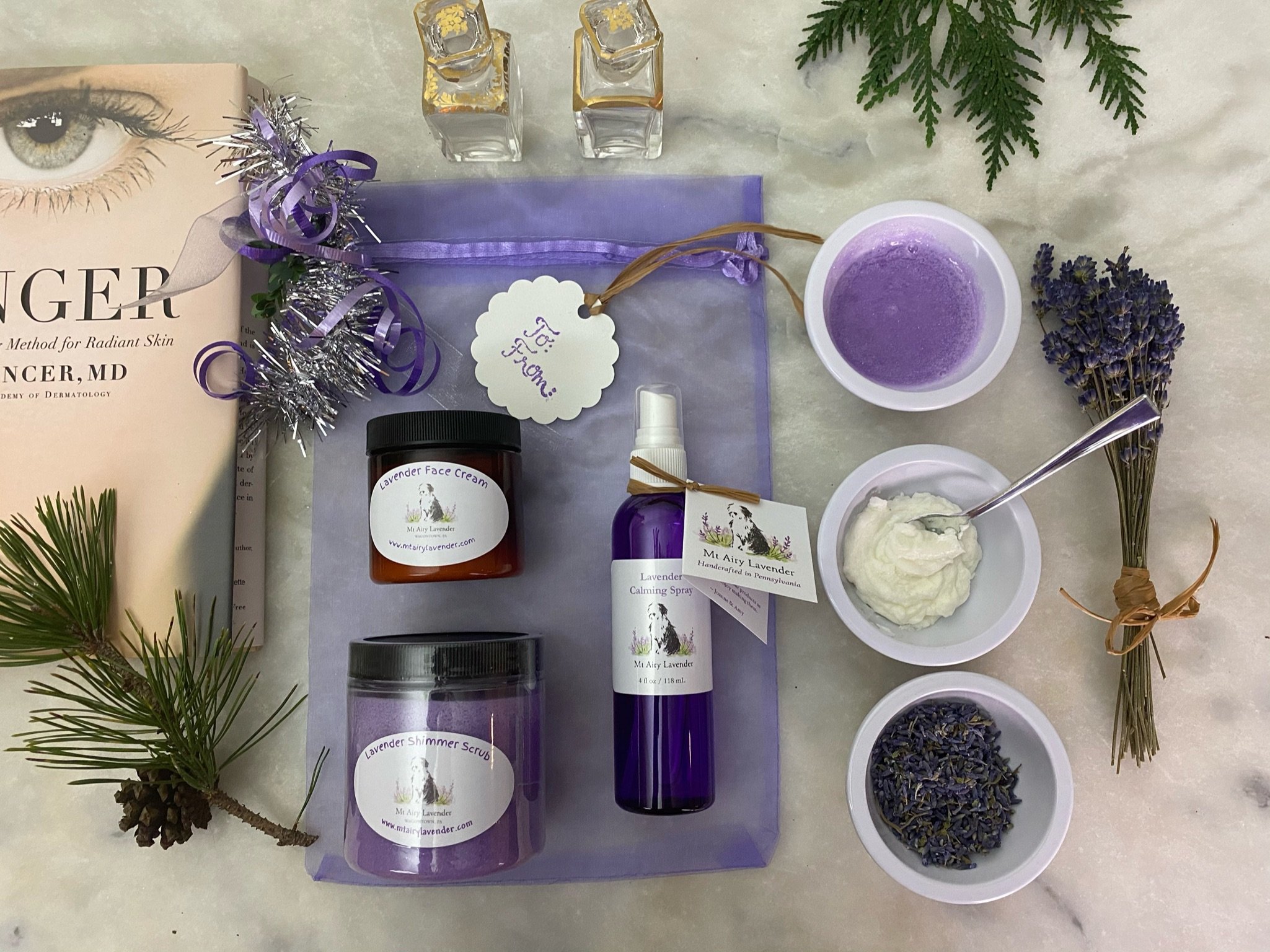Behind the Scenes
If you have had the opportunity to visit our farm, you may have seen us planting, or harvesting the lavender. But many of you may not realize that we actually distill our lavender to make lavender essential oil and lavender hydrosol used in our products. So I decided to write about this process. And although I started writing this blog to educate our customers, I realized how much I take for granted all that is involved to create a single drop of Lavender Essential Oil. So I am writing this article with a new appreciation of all the steps we take to make our Mt Airy Lavender products.
It all begins with the love of the land
Like many things in life, the care and nurturing you give on the front end is really what is important to produce quality results. And it is no different here on our farm. It all starts with the love of the land. And not only the love required to nourish the soil and care for the plants but actually the true love of the land. Our parents bought the farm in 1970. The fields were overgrown with weeds and brush and the house was in disrepair. There was no bathroom, only an outhouse and I still remember the kitchen having a dirt floor. But they had a dream and renovated the farmhouse and cleared the fields to become the beautiful farm it is today. And it is this love of the land that is deep-rooted in us.
And trust me, in farming you need this deep-rooted passion. Everyone knows farming is hard work, but the real challenge is how much resilience is needed. There have been years when we lost most of our lavender plants due to a deep freeze or wet weather. But it is this love of the land that keeps us motivated to replant and keep going. And we are so grateful that we have this passion and drive because although farming is hard work, my sister and I get so much satisfaction and joy in creating and sharing the beauty of the farm and our products with you.
Planting the Lavender
Lavender loves a slightly alkaline and loamy soil. So we start each season by testing the soil and adding the appropriate nutrients. We always choose a sunny hill to plant our lavender. Lavender loves lots of sun and needs good drainage. We haven’t had much luck propagating our own plants, so we typically order our lavender plants in the fall for spring delivery. They arrive in early March as little seedlings.
We then truly “baby” these plants, by keeping them warm in our greenhouse and watering them every day until they are big and strong enough to be transplanted to a larger pot. We then tend to these “teenagers” for another 6 weeks until they are ready to be on their own and planted along with the big kids in the lavender fields. We then water often the first summer after planting to get them truly established. We will wait to harvest them until the following year.
Harvesting- a Labor of Love
Often, we are asked: “When do you cut or harvest your lavender?” Well, it will depend on how we intend to use it. For our English Lavender (like Big Time Blue or Super Blue), we like to harvest this beauty right after the lavender florets start to bloom. We do this for two reasons, one for crafts and products like our cocktail stirrers, we find by cutting it early before the florets have time to pop, the buds stay on the stem longer and keep their vibrant color after they have dried. Secondly, the more you cut this workhorse, the more it blooms. So we will cut this variety often throughout the summer.
In contrast, harvesting our French Lavender crop is such a bittersweet moment. This type of lavender blooms only once and then it is done. It is so tough for us to harvest because we love seeing the lavender in the fields. Unfortunately, this is the cost of doing business so we have a rule - all French lavender must be harvested by July 15th. Honestly, though, we always leave a row or two that we can’t bear to cut so early!
All of our harvesting is done by hand and takes several days. The harvesting is a long tedious process while fending off the masses of bees busily collecting their pollen.
The next step is bundling and hanging. We hang the lavender in our barn to dry. This year we had such a great harvest, we had to add additional walls of wire fencing inside the barn to hold all our lavender. After about 10 - 12 days, depending on the weather, we take the bundles off the wall, trim them and store them in boxes and bins in a dark, dry location. We will de-bud some of the lavender and use the buds for sachets. We will also sell our dried bouquets directly to our customers, florists, craft shops, gift shops, and other companies that make lavender products. But the majority of our lavender we will distill to make essential oil and hydrosol (lavender water).
Now the Fun Part - Distillation
To distill the lavender, you can use fresh or dried lavender flowers. In the summer, we are busy hosting guests with farm tours, workshops, and visits to our farm store. So, we prefer to wait until the summer winds down to focus on our distillation process.
We have a 40-liter copper still. The anatomy of the still is shown below so you can better understand the process. The bottom is just a big pot. The Column has a sieve on the bottom and fits snuggly on top of the Pot. The Hat attaches to the top, and the tube coming from the top of the Hat is called the Swan Neck and continues into the Condenser.
To distill the lavender, you first fill the bottom pot halfway full with water and place the still over a heat source (propane flame). Then cut the lavender below the flowers and you pack the column with the flowera and place the hat on the column packing additional florets inside the hat. The column has a sieve on the bottom, that keeps the lavender from falling into the pot, yet will allow the steam to pass through.
Once the column is in place you need to seal the seams with plumber’s tape so that steam and precious lavender oil will not escape.
After the lavender is packed in the still, you run cold water through the cooling bucket and set up a device called an Essencier that separates the oil and water. Then we crank up the heat. Essentially the water is heated to release steam. The steam rises through the column and the molecules of lavender essential oil are released from the lavender flowers into the steam and travels through the swan neck and through the coils into the condenser. The steam is then cooled as it travels through the coils in the cooling tank and the liquid (essential oil and hydrosol) is collected and separated in the Essencier.
The Mother Load- Essential Oil
The essential oil is highly concentrated. When we distill a batch of lavender (15 large bundles) we only get about 20 ml of essential oil. That is less than 1 ounce! As you can see, the work involved to extract Lavender essential oil is intense, however, the final product is so worth it! Lavender essential oil has many benefits. We hear so many stories from our customers on how our lavender essential oil has helped them. We have mothers that tell us how they use our calming spray to soothe their children's insect bites, sunburns, and minor burns. Customers tell us how therapeutic the lavender oil in our body butter and face cream is for their skin (rosacea, eczema, acne, dry skin). And nurses share stories of how the lavender oil helps calm their Alzheimer patients who often struggle with anxiety, especially at night. The lavender essential oil not only helps the patient but calms the caregiver as well. So although the distillation process is lengthy and a lot of work, these stories make the job so worth it!
Hydrosol- Always Playing Second Fiddle
In addition to the lavender essential oil that is produced during the distillation process, we also get another product which is called hydrosol sometimes referred to as lavender water.
Hydrosol is often considered to be just a byproduct of the distillation process, but in reality, hydrosol stands up on its own with its own special attributes. All of the natural chemical compounds stored in the lavender plant make up the wonderful properties of hydrosol.
Hydrosol has many of the same benefits as essential oil, with a bit more. Like lavender essential oil, hydrosol also has calming properties and it is the main ingredient in our Lavender Calming Spray. Our customers tell us they use it in their bedrooms and spray it on their sheets to give a fresh, clean fragrance that helps them sleep at night. It also helps repel insects and soothes wounds. It is safe for dogs and children and I have a friend that says her son always asks for the lavender ”boo-boo” spray any time he gets a scratch or insect bite.
Lavender hydrosol is used extensively by the cosmetic industry. Hydrosol is slightly acidic and therefore it is known to be great for the skin as a toner allowing lotions to absorb better into your skin. I use it daily before applying my lavender face cream at night.
Bringing it all Together
Although the planting, harvesting, and distillation process is satisfying, I get real pleasure and joy when we use our dried lavender, essential oil, and hydrosol to make our products. I love creating the products, labels, and special packaging so that they can be used as gifts either for yourself or a friend. But most of all I love all the wonderful comments from our customers that purchase our product. Thank you!
In closing and reflecting on all our processes, I need to pause and give thanks to all that make Mt Airy Lavender possible: my parents who had the great vision of how beautiful this farm could be, my business partner and sister, Joanne, who allows me to do the fun stuff (packaging, blogging, flower design) while she does all the business stuff, our husbands and other family members that are always there when we need help or have a new project (and believe me we have many projects), my daughter that helps with all of our social media and marketing, our farmhand, Ruffino, who painstakingly tends to the fields, and last but not least our customers who give us the inspiration and encouragement that motivates us to continue to love and grow Mt Airy Lavender.
With Gratitude and Appreciation,
Amy and Joanne
If you are interested in staying in touch with us, please sign up for our mailing list here and receive our guide to Growing Lavender.


